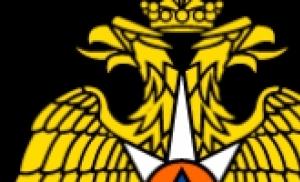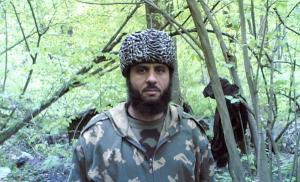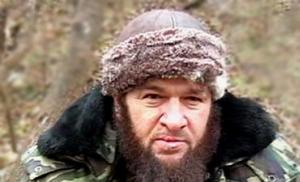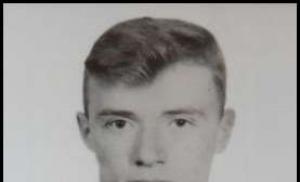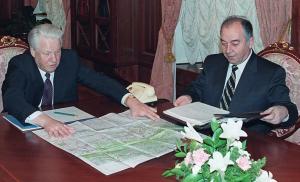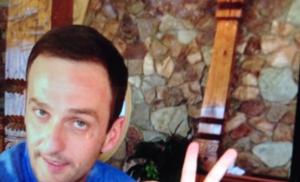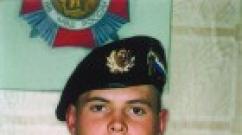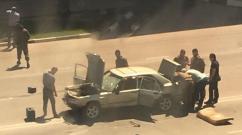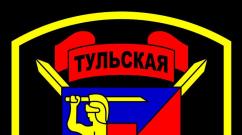Russian universities. Kostroma State University
For more than sixty years, the leading university of the region, KSU, has been supplying highly qualified personnel. Kostroma is the only city in Russia that trains specialists for the jewelry industry. The university is focused on the latest educational technologies, has a significant scientific potential, and has a good material base. Graduates of KSU (Kostroma) are in high demand in the country.
A word about the university
Today we can say with confidence that Kostroma knows and loves KSU well, because this university has been decorating the city since 1949, and the university and the region experience all the joys and anxieties together. It is from here that the bulk of applicants come to the walls of the university, it is the enterprises of the region that leave the largest and best part of the graduates.
In Kostroma, KSU is a highly respected university that can set the direction for the entire future path of the young generation. This is the path to success, because education here is of exceptional quality and is really in demand. Here, each student has the opportunity to develop all his brightest creative abilities in order to climb the career ladder as successfully as possible in the future. That is why almost always and for all specialties there is a rather high competition for admission to Kostroma State University.
Reasoned Choice
Today's applicants have a lot of options for choosing a higher education institution. However, Kostroma State University is one of the safest. And this can be confirmed by thousands and thousands of graduates who have become successful professionals, entrepreneurs, civil servants, scientists, engineers, teachers.
KSU named after Nekrasov (Kostroma) - and multidisciplinary. It has a long history and a powerful scientific potential, thanks to which there are huge opportunities for self-realization. This university is not only innovative, but also creative, with talented teachers who give all their knowledge to students, with a ready platform for the most dizzying experiments.

Story
The actual date of the creation of the university is 1918, when the new state university was called the Workers' and Peasants' University and was opened in memory of the October Socialist Revolution. Kostroma University was legalized in January 1919 by a decree of the Council of People's Commissars, which was personally signed by V. I. Lenin. He began classes in November 1918 at this educational institution, a world-famous scientist - E. M. Chepurkovsky.
And the rest of the teaching staff in Kostroma was truly stellar. Professor F. A. Menkov read political economy, F. A. Petrovsky, B. A. Romanov, A. F. Izyumov, A. I. Nekrasov, V. F. Shishmarev and many other remarkable scientists read humanitarian subjects. It was here that one of the most famous Pushkinists S. M. Bondi and academician N. M. Druzhinin began their teaching activities. And that is not all! Students of KSU in Kostroma listened to brilliant lectures by Anatoly Vasilyevich Lunacharsky, People's Commissar of Education, and Fyodor Kuzmich Sologub, a wonderful poet, an expert on new literature and the new theater.

Start
From the very beginning, the university had only three faculties - forestry, humanitarian and natural, a little later medical and pedagogical were opened. It was very difficult to teach students in those days, since everyone had the same access to education, and workers and peasants did not go through school programs. However, the enthusiasm was great. An educational association was opened with a higher folk school, where applicants received fairly deep training.
In 1919, the working faculty was opened, and he took over the preparation of students for academic education. By 1921, more than three thousand workers and peasants were studying at the Kostroma State University. Then, many new universities in the country went through a process of reorganization, including KSU. On its basis, two universities were created - agricultural and pedagogical. And it was not the last transformation.
Institute
Since 1939, this university existed and developed as a pedagogical institute, in 1946 it received the name of N. A. Nekrasov, since the anniversary of the Russian poet was widely celebrated in the country. In 1950, 1800 students studied at the correspondence and full-time departments, there were fifteen departments, where almost ninety teachers worked. Since 1960, the university has developed especially successfully. An art school was merged into KSPI in the form of an art and graphic faculty, then a department of foreign languages was opened, which by 1968 became a separate faculty.
By that time, Kostroma had increased the number of KGU corps. Back in 1964, building "A" appeared - a large educational building, which is located on 1 May Street. Construction was also carried out huge, in which almost the entire Kostroma participated. The KSU dormitory (850 places!) on Shchemilovka, the sports complex on Pyatnitskaya, new educational buildings - all this was built before the beginning of the 80s. Since the needs of the national economy changed over time, new specialties were needed. KSU in Kostroma has always responded to such demand. New faculties were formed: musical and pedagogical, labor and general technical disciplines, physical culture, methods and pedagogy of primary education.

University
The economic and social transformations in the nineties of the twentieth century were very large-scale. They also contributed to the development of KSU in Kostroma. Specialties increased to nineteen, faculties became thirteen. Most of the pedagogical traditions and heritage accumulated over many decades have been preserved. There were already twice as many students studying here, and the pedagogical education of KSU was famous not only in its own region. The teaching staff has changed significantly in quantitative and qualitative terms: among the four hundred teachers there are more than one hundred and seventy candidates and doctors of sciences, associate professors and professors.
Back in the eighties, seventeen people were preparing for graduate school. In the nineties there were more than seventy. And the graduate school was already working in fourteen specialties. Until 1994, four doctoral and thirty-five master's theses were defended. The certification of the university passed, and the institute became a pedagogical university - KSPU named after Nekrasov. Scientific and business relations were established with universities in Germany, Great Britain, Denmark, France, Poland and some other countries. And in 1999, the logical result of all this development was the order of the Ministry of Education and Science of the Russian Federation on the status of a classical university with the name "KSU named after Nekrasov" (Kostroma).

Directions
Today, a team of scientists from KSU conducts innovative, exploratory, fundamental, applied, scientific and methodological research in all sciences present at the university. The development of scientific schools and university directions in education, Russian history, economic theory, intercultural communication, archeology, jurisprudence, literary criticism, social psychology, dialectology and phraseology, social work and social education, ecology, chemistry and many others is becoming more and more noticeable.
Publication activity is increasing, many scientific developments are being carried out, and therefore every year the rating of KSU among other Russian universities is getting higher. Monographs, collections of scientific papers, textbooks and teaching aids, and many other types of methodological literature are well developed and published.
Publishing
The University has its own publications - "Bulletin of KSU" and "Economics of Education", which are included in the List of periodic scientific and technical publications of the Russian Federation, where the results of dissertations are published. Applicants for the degree of candidate and doctor of science do not have to look for journals for publication for a long time. The entire series of the KSU Bulletin (which is psychology, pedagogy, juvenology, social work, sociokinetics) is included in the scientific citation index of the Russian Federation.
Now the graduate school prepares candidates of sciences in twelve branches of science and in thirty-nine specialties; by 2011, nine specialties in doctoral studies have already been opened. The magistracy of KSU (Kostroma) starts accepting documents on the twentieth of June and continues it until mid-August. Entrance examinations are conducted according to a convenient schedule, which can be found on the website of the university.

Submission of documents to the magistracy
The admission committee of KSU (Kostroma) is located at the address: Dzerzhinsky Street, 17, room 115. Together with the application, the applicant must present documents that will confirm his identity and citizenship. In addition, the application must be accompanied by:
Original and photocopy of higher education document;
Photocopies of documents, if the surname, name or patronymic have changed;
Documents on the individual achievements of the applicant;
When choosing areas of defectology, psychology and pedagogy, the original and a copy of a medical certificate of a special form are required;
If you plan to move into a hostel, you must provide the results of a fluorographic study.
In 2017, 664 people (bachelor's and specialist's) became students of KSU on a budgetary basis, 290 people will study at the correspondence department, 209 people will study at the master's program. Applicants quite often use the opportunity to apply simultaneously for three areas of training and participate in three competitions, thus increasing the chances of successful admission to this university.
Training courses
For applicants at KSU, there are preparatory courses with an intensive program that help not only pass the exam well, but also internal entrance tests. Preparation is carried out in the following subjects: chemistry, physics, Russian language, drawing, painting, social studies, mathematics, literature, history, computer science and ICT, foreign languages, biology.
For each discipline, it is supposed to issue at least one hundred academic hours. Classes begin now, in November, and last until the end of April. This is one day a week from 16.00 to 19.00, that is, four lessons of 45 minutes each. Applications are accepted directly at KSU (Kostroma). Address: Dzerzhinsky street, house 17, room 114. The cost of one item is 6 thousand rubles. Already at the end of October, free courses in informatics and ICT began to work.
Olympics
Today, every applicant knows that it is impossible to enter a good university (and KSU is a very good one) without having certain personal achievements that only a special Olympiad for high school students can give. Kostroma State University is hosting just such an event, and it's called "Support of the Kostroma Territory".
The tasks this year were in thirteen areas, and all of them were prepared by the best teachers of the university. These are the humanities, mathematics, chemistry and physics. Coping with such tasks, high school students can demonstrate not only good theoretical knowledge, but also show creative abilities. As a result, every single participant receives three additional points to the exam. Prize-winners - five points each, and the winners of each direction - ten points at once to the results of the exam.

Unique laboratory
Recently, a laboratory was opened at KSU, where jewelers are trained. About seventeen million rubles were spent on state-of-the-art equipment by the federal budget. For example, there is a 3D printer that can be used to create a three-dimensional model of any product, and there is no such equipment even at Kostroma enterprises (and Kostroma has been famous for its jewelers since ancient times). It should be noted here that this specialty is in high demand.
The Kostroma region today processes up to fifty percent of all Russian gold and up to seventy percent of all Russian silver. It is rightfully considered the jewelry capital of the country: one and a half thousand jewelry enterprises and organizations operate in the region. Every tenth product is exported. Consumers are not only the CIS countries, but also Belgium. Switzerland, UAE, India, Hong Kong and many other countries. Up to eighty percent of export jewelry is made here, and therefore the demand for such specialists is huge.
Scientific library and more
For many decades, the scientific library of KSU has been the main methodological center that coordinates the activities of all libraries located in professional educational institutions of the region. Seminars for librarians are held here, sections are constantly functioning that strengthen ties between the universities of the city and relate to library work.

In the square near the main building of KSU in 2009, a monument was erected to the great son of the Kostroma land - writer, publicist, philosopher, sociologist Alexander Alexandrovich Zinoviev, although he graduated from MIFLI (MSU) rather than KSU. Nevertheless, he was very closely connected with the university of his native land. Posthumously received the title of honorary citizen of the Kostroma region. Even after his cremation, he bequeathed to dispel the ashes "over his native Chukhloma". And in KSU there are a lot of followers of the famous logician and sociologist.
Lyubov Mashkina 11:31 05/22/2013I am a graduate of the Kostroma State University. N.A. Nekrasova. I can be called a hereditary student of this educational institution, since my mother once graduated from it, however, we studied at different faculties: she was in philology, I was in music and pedagogy.
In the year when I entered, there was a competition for the music and pedagogical faculty, albeit a small one - two people per place. True, since then the situation has changed: in the universities of Ivanovo and Yaroslavl open ...
Marina Salnichenko 09:57 04/28/2013
Kostroma State University named after N.A. Nekrasov (KSU named after N.A. Nekrasov) is located in the city of Kostroma, which, in turn, is located only 85 km from the capital of the Golden Ring - Yaroslavl. I entered there 10 years ago at the Faculty of Physics and Mathematics. There were no difficulties with admission, as they were taken based on the results of school exams. The passing score was 9, but I had as many as 10, since at school both mathematics and Russian were 5 (so start learning from school - it’s not a problem ...
general information
Federal State Budgetary Educational Institution of Higher Professional Education “Kostroma State University named after N.A. Nekrasov"
language ksu.edu.ru
mail_outline [email protected]
phone 31-82-91, 39-16-01, 39-16-03, 39-16-06
License
No. 02343 valid Indefinitely from 12/20/2011
Accreditation
No. 00983 valid from 04/30/2014 to 04/30/2020
Previous names of KSU them. ON THE. Nekrasov
- Kostroma State Workers' and Peasants' University in memory of the October Revolution of 1917
- Kostroma teacher's institute
- Kostroma State Pedagogical Institute named after N. A. Nekrasov
- Kostroma State Pedagogical University named after N. A. Nekrasov
Monitoring results of the Ministry of Education and Science for KSU named after ON THE. Nekrasov
2016 result: by the decision of the Interdepartmental Commission of the KSU named after ON THE. Nekrasov is included in the group of universities in need of reorganization (report)
| Indicator | 15 year | 14 year |
| Performance indicator (out of 7 points) | 6 | 4 |
| Average USE score in all specialties and forms of education | 60.93 | 60.96 |
| Average USE score credited to the budget | 64.56 | 62.63 |
| Average USE score enrolled on a commercial basis | 58.98 | 60.36 |
| The average for all specialties is the minimum USE score enrolled in the full-time department | 49.27 | 52.18 |
| Number of students | 5381 | 5920 |
| full-time department | 2642 | 2917 |
| Part-time department | 213 | 148 |
| Extramural | 2526 | 2855 |
| All data |
- football
- basketball
- winter polyathlon
- Athletics
- summer polyathlon
- ski race
- aerobics
- shaping
- body-building
- volleyball
- table tennis
The medicine
There is a medical center.
Creation
United Council of Students (Council of Students) of Kostroma State University named after N.A. Nekrasov
United Council of Students (Council of Students) of Kostroma State University named after N.A. Nekrasov (hereinafter referred to as the Council) is a representative self-government body of students at the university.
Goals and objectives of the Council:
Development and coordination of the activities of student self-government bodies of educational units, public, scientific, creative, sports, professional, volunteer associations of students, graduate students and teachers in order to promote the professional development and socio-cultural development of students;
Ensuring the state-public nature of the management of the university through the inclusion of students in the management of the educational, scientific and innovative activities of the university;
Representing the interests of students in front of the university administration, ensuring transparency and collegiality in the design and planning of support for student associations.
The activities of the Council are based on the principles:
Democracy and humanism (openness of discussion and decision-making, development of initiative at all levels, electiveness and change of leadership, focus on personal development and the formation of the social experience of each student, activities based on cooperation),
Equality and diversification (the opportunity to participate in the discussion when making decisions of the Council for associations that are diverse in organizational structure, quantitative composition and formalization, including student-teacher associations),
Advances in subjectivity (orientation to change the student's position from a passive object of influence to an active participant in the development and transformation of one's own personality, relations with the outside world; purposefulness of activity, initiative, activity of a pro-social vector, an active position in the search for means and the realization of goals),
Autonomy and initiative (independence from administrative structures in setting goals and objectives, developing the main directions, forms and methods of implementing activities, the creative nature of activities),
Hierarchy (orderliness of the activities of student self-government bodies of individual associations and structural divisions of the university, the establishment of vertical and horizontal links between them, the division of powers and responsibilities),
Relations with the environment (interaction with the structural units of the university, state and public organizations, business structures whose activities do not contradict the ideas and goals of the Council, the orientation of the activities of associations to improve the lives of others, a feasible contribution to the socio-economic development of the region),
Professional orientation of activity (focusing on professionally significant changes in the personality of the participants in associations, the formation of a professional and personal position of each student).
The composition of the Council includes one representative from each educational unit (as a rule, trade unionists of faculties / institutes) and one representative from the student self-government bodies of public associations operating at the university (Headquarters of STO and professionally oriented student associations, NSO, Student Council of the Sports Club of KSU ).
For many years, the N.A. Nekrasov Kostroma State University has been carrying out systematic work to form a wide network of educational structures within the framework of pre-university training.
The purpose of pre-university training- creating optimal conditions for future students of N.A. Nekrasov KSU for high-quality completion of secondary education, filling in the “gaps” in knowledge, preparing for entering the university and adapting to subsequent education, attracting talented youth, selecting the most prepared and career-oriented applicants. Thus, pre-university training provides the level of general education and professional training of young people necessary for the university.
Pre-university training- this is a link in the system of continuous education, which is not only a step towards obtaining higher education, but also an important stage in the life of a young person on the way to acquiring a profession and further personal development.
The traditional forms of pre-university training at the university are:
1.Different in duration training courses- evening, part-time, short-term, which as a form of pre-university training have existed for more than 40 years;
2.Preparatory department(working for over 30 years);
3.Pre-vocational Schools: Pedagogical Classes(working for over 20 years) and others specialized schools and classes(work more than 5 years).
Kostroma State University named after N.A. Nekrasov.
Teaching is one of the noblest professions. After all, training and education of the future shift is the key to the prosperity and development of any society. The future of many Russians, and the whole of Russia as a whole, will depend on what kind of teacher he will be, what example he will set for his students, what and how he will teach.
The leadership of our country, realizing this, is taking the necessary measures to increase the salaries of teachers, improve their working conditions, and improve the material and technical base of school education. Therefore, the profession of a teacher will always be in demand, and teachers will receive a decent salary. Kostroma State University named after N.A. Kostroma will help to get this much-needed profession. Nekrasov.
KSU them. Nekrasov
Nekrasov University of Kostroma has been leading its history since 1918 and will soon celebrate its centennial anniversary. Over the years, the university has gone through several reorganizations, but it managed to maintain the main thing - the continuity and traditions of quality education. The university acquired the status of a classical university and the opportunity to train specialists of a wide profile in 1999, having successfully passed the certification.
All these achievements cannot be imagined without teachers, associate professors, professors and doctors of sciences, who devoted many years to the university and the training of future teachers within its walls. Tens of thousands of graduates are successfully working not only in the Kostroma region, but throughout Russia, continuing the glorious traditions instilled in them at the KSU. Nekrasov.
Today the university is one of the largest in the region. And the building of the university is located in a picturesque place on the banks of the Volga. This is a modern computerized complex, equipped with the latest software and teaching aids for the training of modern specialists. The social and living conditions of the university are also at the highest level. And nonresident students are provided with a hostel, which has all the necessary conditions for living and studying.
Education at Nekrasov KSU
Kostroma University named after Nekrasov includes 10 faculties that train specialists in the pedagogical and humanitarian areas, including:
natural sciences;
foreign languages;
historical;
musical and pedagogical;
technologies and services;
physical and mathematical;
physical culture;
philological;
artistic and graphic;
legal.
For future teachers there is the widest choice of specialties. For children who like biology or geography, the Faculty of Natural Sciences will always open its doors. And then its graduates will be able to teach their favorite subjects at school and teach future generations to love the nature around us.
Children who are fond of foreign languages are given the opportunity to become teachers of English, German or French at school. Lovers of history and local history have the opportunity to receive an appropriate education and teach them at school.
A special place in the institute is occupied by the Faculty of Technology and Service. In addition to the highly demanded profession of a teacher of labor, graduates of this faculty will also acquire a lot of skills in working with metal, wood, and other materials, which will greatly help them not only in their professional activities, but also in everyday life.
In addition to pedagogical specialties, the university trains future lawyers. Despite numerous attacks against educational institutions of this profile and their graduates, the legal profession has been and will be in demand. And graduates of the Faculty of Law, with a certain amount of knowledge and skills, will be able to find a job in their specialty without any problems.
More detailed information about the university, the rules and procedures for admission to all specialties will be provided by the official website of the KSU. Nekrasov, available around the clock on the Internet.
KSU them. Nekrasov is a leading scientific and methodological center in the main areas of educational activity.
ksu.edu.ruAbout the university
"Kostroma State Workers' and Peasants' University in memory of the October Revolution of 1917" - under this name, on the initiative of local authorities, the first university in our city appeared. The Decree of the Council of People's Commissars of January 21, 1919 legalized the establishment of the State University and decided to consider November 7, 1918 as the opening date. These important events began the difficult history of university education in Kostroma.
The building of the Assembly of the Nobility on the former Pavlovskaya Street (now Mira Avenue) temporarily became the main building of the university. Classes began on November 17, 1918 with a lecture by E. M. Chepurkovsky, Privatdozent, later a world-famous anthropologist, "Types of the prehistoric and modern population of Great Russia", read in the White Hall.
Professor N. G. Gorodensky, who taught classical philosophy and already had experience in organizing a university in Tiflis, where he was the first rector, became the first rector of the university created in Kostroma, and Professor M. I. Kovalevsky, elected vice-rector, was educated abroad, mainly in the famous Göttingen university. At the end of 1919, when N. G. Gorodensky resigned as rector for health reasons, Professor F. A. Menkov, head of the department of political economy and statistics, became the head of the university.
Despite the socio-economic difficulties, the new university absorbed the best traditions of Russian higher education. Kostromichi specially went to get acquainted with the organization of education at Moscow State University, some of whose professors and pupils became teachers of the new university, and the dean of the faculty of the humanities, Professor V.F. Shishmarev, who had previously taught in St. Petersburg, could not help but bring the traditions of Petrograd university education.
The university managed to gather an excellent staff of teachers. There were 10 professors working at the natural faculty alone. Such well-known scientists as F. A. Petrovsky (classical philosophy), B. A. Romanov and A. F. Izyumov (history), A. I. Nekrasov (history and theory of arts), V. F. Shishmarev (history of Western European literature and Romance philology), S. K. Shambinago (literary criticism), A. L. Sacchetti and Yu. P. Novitsky (law). The famous Pushkinist S. M. Bondi (who made his first scientific discoveries while still a student) and the future academician historian N. M. Druzhinin took their first steps in teaching here. Students of Kostroma University could hear brilliant speeches by the then People's Commissar of Education A. V. Lunacharsky, lectures by the remarkable writer of the Silver Age F. Sologub about new literature and the new theater.
Along with the main - natural and humanitarian faculties - the VI Provincial Congress of Soviets, taking into account the social needs of the region, proposed to open special faculties, primarily forestry and pedagogy. A year later, a medical department was opened. The university quickly turned into a major educational center.
Since workers and peasants could enter the university without exams, 2,494 students were enrolled in the humanities, natural sciences and forestry faculties. However, semi-literate students had a vague idea of academic education. When they heard lectures on psychology, the history of philosophy and other disciplines, their interest in studying at the university could not help but decrease: the students clearly lacked basic training. In this regard, an educational association was opened at the university, which included a higher public school and a provincial society of public universities. Since 1919, the function of preparing students for study at the academic department was taken over by the working faculty that appeared at the university.
The consequences of the Civil War, the introduction of the New Economic Policy, and the reduction in funding for education led to the fact that already in 1921 the young university was closed. However, the educational and scientific potential of the university was in demand. The natural faculty was transformed into the Practical Agricultural Institute, and the pedagogical faculty was merged with the Institute of Public Education, as a result of which an independent pedagogical institute was created, which lasted about two years.
The problem of lack of funds led to further reorganization: in 1923, the Institute merged with the Pedagogical College, which existed on the basis of the teacher's seminary, which was closed in 1918. university), after the closure of the university increased tenfold - more than 600 people.
In November 1924, the Kostroma Pedagogical and Vasilyevsky Agricultural Technical Schools merged, as a result of which the M. Gorky Agricultural Pedagogical College was formed, which trained teachers and agronomists at two departments. In 1927, the third department was opened - political and educational, which produced propaganda workers for the village.
In connection with the preparations for the transition to compulsory primary education, in 1928 the technical school again became a pedagogical school and included two departments - school (daytime) and preschool (evening). Pedagogical courses are also regularly organized at the technical school in order to relieve tension in the provision of teaching staff.
In 1937, the Pedagogical College was transformed into a Pedagogical College. Thanks to the activities of its director T. E. Naumova, head teacher E. A. Voskresenskaya, Russian language methodologist V. I. Zhdanova, talented painter B. N. Tsarnakh, historian L. A. Pombrak and other teachers, it became possible to preserve in those years traditions of pedagogical education in Kostroma.
In connection with the course taken by the country for a compulsory seven-year education, the scope of the school for the pedagogical educational institution in Kostroma turned out to be narrow. In 1939, by the decision of the People's Commissariat of Education, the school was transformed into a teacher's institute, which at various times until 1949 was headed by P. L. Chernova, G. I. Barashkova, M. P. Kroshkina, Ya. D. Gilenko, N. A. Vilinskaya , P. Ya. Aleshkin, A. D. Volkov. Difficult 1940s became a period of relative stability in the development of the university. Initially, two departments were opened at the institute: Russian Language and Literature and Physics and Mathematics. From 1940 to 1946 there was a historical department, united during the war with the verbal, and then again divided into two independent educational units. At the end of the war, a natural-geographic department also arose.
After the Great Patriotic War, the teaching staff of the university began to change qualitatively. A. V. Mirtov became the first doctor of philological sciences and professor at the Institute. Philologists M. N. Borzhek, N. A. Vilinskaya, N. A. Shchavelkina, historians K. A. Buldakov and I. E. Pakhomov, and psychologist F. T. Kuimov taught at a high scientific and methodological level. The energetic work of the director of the institute A. D. Volkov, whose life was suddenly cut short in March 1949, and therefore he did not live to realize his dream - raising the status of the university , transforming it into a pedagogical institute.
In 1946, the university was named after the Russian poet Nikolai Alekseevich Nekrasov, whose 125th birthday was then widely celebrated in the country. In the short period of its existence (the last issue was made in 1952), the teacher's institute trained about 1,200 teachers.
Since 1949, for more than 45 years, the university will become the Kostroma State Pedagogical Institute named after N. A. Nekrasov, although until 1953 the teacher and pedagogical institutes functioned in parallel and graduates of the teacher's university often continued their studies in the third year of the pedagogical one. L. N. Talov (from 1949 to 1954), a MIFLI graduate, historian, became the director of the institute during the transitional time for the university. As of January 1, 1950, the total number of full-time and part-time students was over 1,800. By 1952, 84 teachers worked at 15 departments of the institute, among whom were two doctors and 33 candidates of science.
Famous scientists worked at the Faculty of History and Philology in those years: Doctor of Philology D. E. Tamarchenko, M. N. Belov - in subsequent years, the author of many studies on the history of the working class of pre-revolutionary Russia and the history of the Kostroma Territory, who in 1955 replaced K A. Buldakov as head of the Department of History of Russia. In 1953, the first graduation of the Faculty of History and Philology took place. Among the graduates of this year, N. N. Skatov, later a world-famous scientist, headed the Institute of Russian Literature (Pushkin House) for many years.
Many talented students were brought up by teachers of the Faculty of Physics and Mathematics Ya. D. Gilenko, B. F. Rubilov, Doctor of Physical and Mathematical Sciences D. A. Raikov, who had previously worked at the Mathematical Institute of the USSR Academy of Sciences.
Students of the natural faculty studied the nature of their native land together with their teachers: M. I. Toropova, P. I. Belozerov, N. I. Chudinovskikh, A. V. Aleksandrova, V. N. Kolpakov and other talented specialists. A very bright personality, a comprehensively erudite person and a creative researcher was Professor A. L. Zelikman. Until now, students study the zoology of invertebrates according to his practical work, published in 1965.
Thanks to the high qualification of teachers, scientific activity is strengthened at the institute. In 1951, the first collection of scientific papers of teachers and students of the institute, “Scientific Notes of the KSPI”, was published (the publication of each article at that time required permission from the Ministry of Education of the RSFSR). During the 1950-1951 academic year, a scientific student society was formed, uniting students in 15 scientific circles. By 1953, the NSO had 78 members. The best students received a direction in the capital's graduate schools.
Since 1954, the institute has been headed by F. M. Zemlyansky, an initiative rector, under whom a basic school appeared at the university - secondary school No. 29 in the city of Kostroma. School teachers are appointed by order of the rector of the institute, its students have priority when entering KSPI, students here test pedagogical innovations in practice.
In the 1950s the material and technical equipment of departments and classrooms is being improved, new educational laboratories are being opened. In the same year, a new hostel for 275 people was built on Tekstilshchikov Avenue for teachers and students of KSPI.
1960s–1980s - a period of increasing qualitative changes in the pedagogical institute, due to the introduction of universal secondary education in the country. M. I. Sinyazhnikov became the rector of the institute during this period, since 1961 he headed the KSPI for 25 years. The new rector organizes a close-knit team of competent specialists. Among them stood out such scientists and talented organizers as I. P. Shulman and A. K. Shustov, who were deputies of the rector for educational and scientific work, deans of the faculties of the university. For almost 30 years, N. I. Korochkin headed the correspondence department. All of them, having passed the roads of the Great Patriotic War with honor, managed to do a lot to strengthen the prestige of KSPI, worthily continued the best traditions in the development of national education.
In 1964, the educational building on May 1 Street (now building "A" of the university) was transferred to the university. Construction is underway with the subsequent commissioning of a hostel on Shchemilovka street for 850 people (1968), a sports building on Pyatnitskaya street (1973), and an educational building "B" (1982).
In connection with the transition to a five-year term of study, the educational and methodological work of faculties and departments is being reorganized.
During this period, the Faculty of History and Philology worked effectively, which in September 1966 would be divided into the Faculty of History and Education and the Faculty of Russian Language and Literature. Among the first graduates of the Eastfil with a five-year term of study are now well-known scientists not only in Kostroma, but throughout Russia - literary critics N. N. Skatov, Yu. V. Lebedev, V. V. Tikhomirov, dialectologist N. S. Gantsovskaya. Future teachers, KSPI graduates L. D. Volkova, B. M. Kozlov, T. I. Pakhomov, G. I. Mashirov, were inspired to research work by the most interesting lectures of philologists M. F. Pyanykh, M. L. Nolman, V. Ya. Bakhmutsky, O. A. Minukhina. In the mid 1960s. A. M. Melerovich, who became the founder of the Kostroma scientific phraseological school, comes to the department of the Russian language.
V. V. Andrushkevich, E. P. Osipovich, V. A. Krotova, students of the 1960s who later came to its departments as teachers highly appreciate the work of the then dean F. I. Sorokin. It is to him that the merit belongs in strengthening the status of the faculty, where in the mid-1960s. studied more than 350 students. In 1969, the Ural-2 electronic computer was installed, which laid the foundation for the creation of a computer center at the university.
The faculty of natural sciences also strengthened its scientific positions: in those years, 16 candidates of sciences already worked at its departments. A great contribution to the development of the research activities of the Faculty of Science was made by the inventor and innovator, Doctor of Biological Sciences B. M. Nidershtrat.
With the order of the Ministry of Education of the RSFSR dated May 21, 1960 on the transfer to the budget of the Pedagogical Institute of the Kostroma Art School, founded in 1905 by a graduate of the Academy of Arts N.P. Arts of the RSFSR A. I. Buzin. E. I. Mayansky, who developed curricula for the training of teachers of labor (the faculty trained teachers of drawing, drafting and labor), also stood at the origins of the art graph.
The faculty inherited the material and technical base of the school: a two-story stone building on Kooperatsia Street (house 8), a valuable library and a rich educational and methodological fund. Among the teachers of drawing, painting, composition are graduates of the capital's art institutes: honored artists V. A. Kutilin and M. S. Kolesov, People's Artist of the RSFSR A. P. Belykh.
On September 1, 1966, the Department of Foreign Languages was opened at KSPI, which two years later was transformed into an independent faculty. E. B. Shutova, in those years the head of the Department of Foreign Languages, in a short time managed to select qualified teachers, the first among whom were I. A. Kabischer (Tikhonova), L. F. Skryabina, T. I. Ilyina, N. G. Oleinik.
In 1962, on the basis of the Faculty of History and Philology, one of the first and few departments in the country for the training of history teachers and pioneer leaders with higher education was opened. In 1966, the department was reorganized into an independent faculty for the training of teachers of history, social science and methodologists of pioneer work - historical and pedagogical. Since 1968, the only correspondence department in the country has been operating on its basis. A significant contribution to the formation of a new specialty was made by its first deans S. M. Mitsengendler, K. A. Voronina, A. N. Lutoshkin, the first head of the department of theory and methodology of pioneer work, the famous historian of the children's movement V. G. Yakovlev. Istped (informally - pioneer faculty) for many years becomes a kind of trademark of KSPI. He trained a significant number of talented teachers, organizers of the children's and youth movement, employees of management structures at various levels. Among its graduates there are many doctors and candidates of pedagogical, psychological and historical sciences.
In the 1980s, mobile responding to the needs of the national economy, KSPI opened new specialties and formed new faculties: general technical disciplines and labor (1983), musical and pedagogical (1984), pedagogy and methods of primary education (1985), physical culture ( 1989). In 1989, 9 faculties functioned as part of the institute, where 2,490 students studied. 286 teachers worked at 32 departments, including 11 professors, doctors of sciences and 119 candidates of sciences.
In the fall of 1989, the institute held elections for the first time for the head of the university on an alternative basis (V.S. Panin, who had worked as rector since 1986, resigned due to illness). N. M. Rassadin is elected Rector of KSPI. The assumption of the office of the new rector coincided with the era of perestroika hopes, but it was followed by an acute socio-economic crisis in the country. In difficult crisis conditions, with constant underfunding, the rector and his management team (first of all, vice-rectors S.N. Nikolaev, I.G. Asadulina, V.V. Chekmarev) managed not only to save the university, but also to ensure its accelerated development.
By 1994, KSPI became a recognized center of the regional system of continuous teacher education, exerting a significant influence on the organization of career guidance in the region, on the basic training of teachers in almost all specialties of the general education school, providing a large region of Russia with qualified personnel. The number of students at the Institute has doubled in 5 years. They received pedagogical education at 13 faculties in 19 specialties. There have been significant changes in the teaching staff. Their number exceeded four hundred, including about 170 doctors and candidates of sciences, professors and associate professors. The graduate school almost five times increased its staff (from 17 to 71 people), which worked in 14 specialties. In the period from 1991 to 1994, 4 doctors and 35 candidates of sciences were trained at KSPI. Two specialized councils for the defense of candidate dissertations began their activities. More than twenty scientific and practical conferences and seminars, including 13 international and republican ones, were held on the basis of the institute during this period. In addition to cooperation with colleagues from Russian pedagogical institutes, during these years KSPI established business, scientific and methodological relations with educational institutions of North Rhine-Westphalia (Germany), Darlington county (England), Halbeck province (Denmark), universities of France, Poland and other countries. .
The result of this work was summed up by the certification of the university, which was followed by the order of the Minister of Education of Russia on renaming from July 1994 to the Kostroma State Pedagogical University. N. A. Nekrasova.
The subsequent five-year period of activity of the university showed that the status of the Pedagogical University was intermediate for reaching a new level. Implementing the main ideas of the “Concept of the University of Education and Russian Culture”, developed and adopted by the Academic Council in the early 1990s, the university increased its potential in training students in specialties that go beyond the pedagogical nomenclature. By 1999, the scientific and pedagogical staff of the university reached the number of 520 people, having strengthened and qualitatively: 55 doctors of sciences, professors and about 250 candidates of sciences, associate professors conducted training sessions with students. Leading scientific schools have taken shape. Scientific directions in physical materials science, phytocenology and population biology, economic theory, national history, dialectology, phraseology, psychology, social education, social work, cultural studies were actively developing. Scientific meetings of the All-Russian and international level were held, cooperation ties were formed with educational and scientific organizations in Russia and abroad. The university opens branches in the city of Sharya, Kostroma region and in the city of Kirovsk, Murmansk region.
The logical outcome of these processes was the order of the Ministry of Education of the Russian Federation, issued on January 5, 1999, which secured the status of a classical university and the name “N. A. Nekrasov Kostroma State University” for the university.
